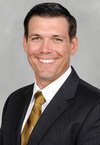Corey Muscara Interview, Part 2: Winter Break Training for Baseball Pitchers
pitchLogic: Can you give our readers an overview of what the on-ramp program was for this past winter-break?
Muscara: “It's a moderate build-up. We had a four-week shutdown period just before the break. I don't remember the exact amount of throws, but it was throwing four times the first week, three times to 60 feet, the fourth day was 90 feet. It took five weeks to get to 200 feet, predicated on the four-week shut down. The fourth week, we started on flat grounds. We had everything scripted in terms of number of throws, percentage perceived effort, and pitch usage percentages. Going out to distances, we wanted players to spin the ball correctly. We wanted good trajectory, we wanted them to move in a good direction. On the way in, we wanted to focus more on where we were throwing it. We wanted to focus on our percentages of what we were throwing. For example, one player is a high changeup usage guy - like 60%. I wanted that guy on the way in throwing 60% change ups. For other guys that are 30% - 40% spin guys, once we got to 90 feet, I wanted 30% - 40% breaking balls. And our biggest focus in catch play was to be consistent with where you're throwing the ball. Be consistent with what axis you're throwing on. Be consistent with your spin. Then you go afterwards to look at the numbers. It gives you a little bit more of a guideline on where you need to be.”
pitchLogic: What would you say worked well and not so well for the winter break on-ramping program?
Muscara: “I got good feedback from the guys. As far as what worked well, I think the guys who threw indoors, their arms were in really good shape. And guys were like man I feel like I really was able to get my distances and be consistent with it. One thing I think is really good on our team is our fastball qualities are all really good and I don't know if it's because of this. It definitely didn’t hurt, and I think it could have aided in it. I’m not even talking about how hard we throw, but most of our guys have very little dead zone fast balls. Most of our fast balls have either pretty good ride, or pretty good run. I think this aids in that. Even though I couldn't check [on them due to NCAA rules], I think it got guys more excited about throwing.
The [other] feedback I got was that when they were at really long distances, like 300 feet or something with a partner, they would get farther away from their phones. That's where they had issues [with the ball staying connected to their phones]. Now the kids that threw into nets, had no issues. I think that would be one of the issues. Also, the major league baseball is significantly different than the college baseball and the high school baseball, and your ball compares very favorably to a major league baseball. So, our guys would be like ‘It felt different’. And that's simply because the major league baseball is vastly different than the college baseball. Those are really the only two -I wouldn't say criticisms- but things that I heard.”
pitchLogic: So, what would you say was the most important goal of the on-ramp program and how successful would you say it was?
Muscara: “Getting their arms in shape. Period. End of story. And their arms were in very good shape. We've had no arm issues - knock on wood. We've been very healthy. That's always the most important thing. At the end of the day, being healthy and throwing strikes are what matters more than anything else.”

